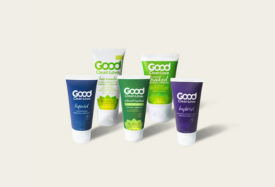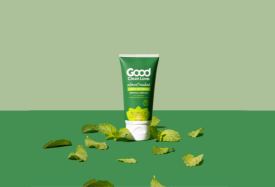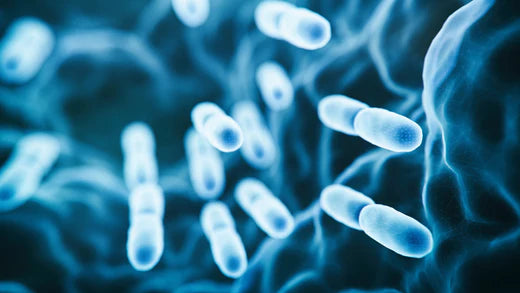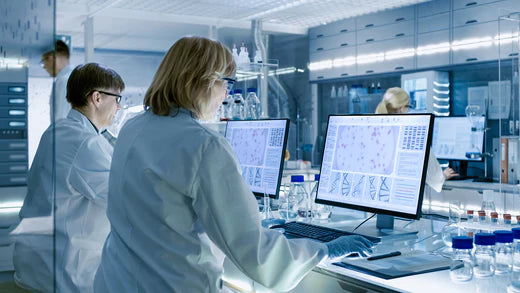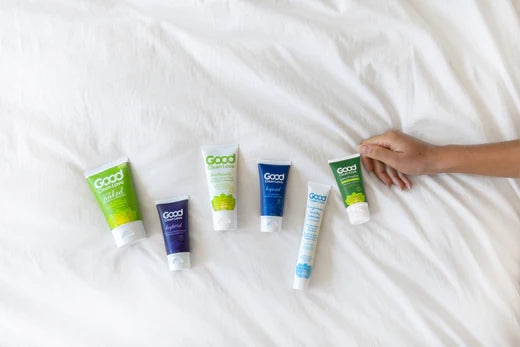Vaginal atrophy is a topic we often get calls about at Good Clean Love. I remember the first time someone called with a question about this condition that I didn’t yet know had a name, or worse still, was a syndrome that remarkably impacts at least 50% of post- menopausal women. Its prevalence is hard to track as is the impact it has on couple’s lives, because most women won’t discuss it, even with their physicians. Chronic and progressive vaginal atrophy has been referred to as “the21st century health issue impacting women’s quality of life.” You would think the fact that millions of women and couples deal with this issue would make it a more accessible topic, or at least one that merited researching solutions.
Many of the symptoms that culminate in vaginal atrophy begin in peri-menopause. This is the time when many women experience pain with sex (dyspareunia) caused by thinning, shrinkage and inflammation of the vaginal walls due to a decline in estrogen levels as women age. The predominant treatment modality for this condition is hormone replacement therapy, as well as the use of vaginal moisturizers and lubricants. I know these symptoms intimately myself, as it was my inspiration to start Good Clean Love.
Unlike men, who are generally much more invested in maintaining their sexual capacities for years, which speaks to the extensive funding and research on male sexual functioning, many women give up too easily on their sexuality. The significant hormonal drop that accompanies menopause takes with it not just internal vaginal moisture and elasticity, but also much of the drive and internal signals that women associate with feeling aroused.
Many doctors treat vaginal atrophy as though it is inevitable. The belief that the condition is progressive, chronic and incurable impacts the women being treated as much as the limited, mostly topical options presented. It is true that the more that a woman ignores the issue and retreats from sex, the more that her vagina shrinks and closes up. If the maxim “use it or lose it” applies anywhere, it is here. Although, it is also true that setting penetration as a goal in itself is both unrewarding and hard to comply with when burning, bleeding and sharp pains are the result.
What is critically absent from most discussions about female sexual functioning is that the arousal mechanism is triggered first in the limbic brain. Building and maintaining a relationship to your erotic self is the doorway to working with the changing genitalia. Unfortunately most women do not have a strong sense of their erotic selves even at the height of their sexuality. Shame and guilt can and do cloud our willingness and capacity for pleasure. Fantasies, which are the fuel for our sexual identities and pleasure pathways are more often repressed than explored.
Opening the space for women to explore what it means to be sexual and to experience their unique arousal mechanism through a wide range of sensory experiences would be a helpful adjunct to current treatment modalities. Our olfactory system lives inside of our arousal mechanism. Identifying the scents that arouse your imagination and using them in the context of sensuous touch are a great way to jumpstart the discovery of your erotic self. These practices, which originated in ancient societies, are worth revisiting as they provide important information to your limbic brain, which processes memory, emotion, sexuality, as well as scent.
I often explain to customers that scent is our primary gateway to our sexuality. A literal storehouse of fantasy is often locked up inside and having the courage to attend to what lives in us, moving beyond our fears of being abnormal (which everyone has) is where our erotic relationships to ourselves and others begins. Even the best lubricant in the world cannot adequately do its job if you are not ready to be penetrated or if your only association with the act is of fear of pain.
Sexual pleasure and pain have an odd relationship to each other and one that is hard to articulate both because it is mysterious and lives in each of us uniquely. A few rules of thumb may help though. First, orgasmic readiness is the space of exploration where our fear mechanism turns off. We are being lead by something deeper and, in some ways, more base in us. This place where we are at least as much mammal as we are human is largely out of our mental control and is also a pain release mechanism. Stated another way, some of the most exquisite sexual pleasure available to us rides the line of pain, which is, in some ways, what makes sexual pleasure so compelling. Orgasm is in fact the transformative energy release that simultaneously liberates both pain and pleasure.
Without the experience of pleasure and the aspiration for the occasional visits of orgasmic transformation, sexual penetration would be experienced only as a form of trauma. Tragically, this is why most women don’t want to fight for their sex lives, because even before the vaginal atrophy began, their access to their erotic selves was limited and pleasure was not the sexual companion it deserved to be.
Yet the capacity to lean into your erotic self and experience transformative healing orgasms actually expands with age. The sexiest part of our body, our arousal mechanism in our limbic brain, does not atrophy.It is always looking for and maybe even longing for the opportunity to be experienced.


